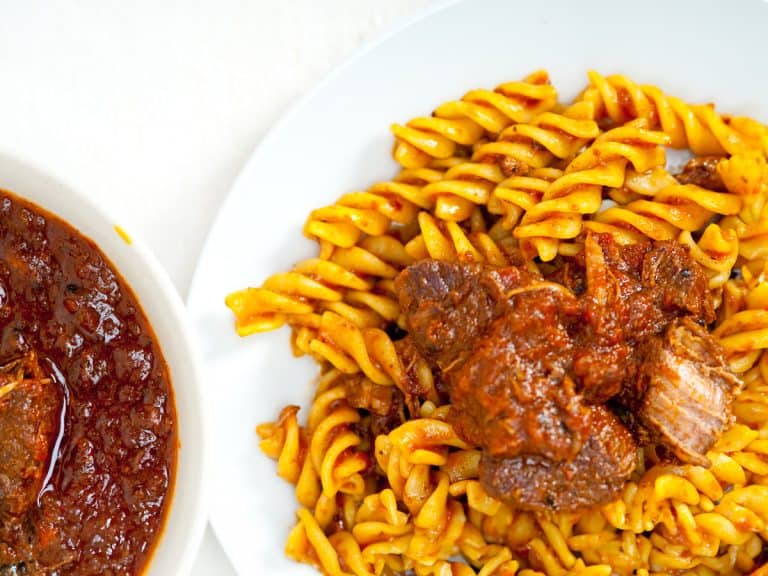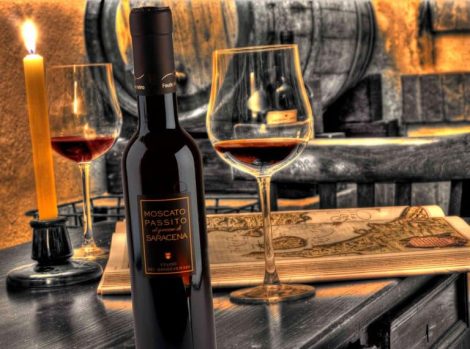Now it can be found everywhere, from neighbourhood shops to large retailers. Present in the exotic fruit department, between avocados and papayas, mango seems to have all the requisites to earn the esteem of consumers on the hunt for less common products but with multiple healthy virtues. In recent years, however, it has become a bone of contention: there are those who eat it morning noon and night; and those, on the other hand, who turn up their noses every time they smell it, due to the particularly intense aroma of the skin. Rather than fuel the feud between the two factions, we decided to dissect the topic and highlight all the properties of this fruit which still boasts 6 millennia of history, excellent nutritional values and a large audience of admirers..
Brief history of mango, from India to Europe
Before landing in Western supermarkets, mango found success in the countries of the Far East. The oldest traces of cultivation, found on Indian territory, date back to the 4th century BCE and they seem to suggest that the plant bore fruits only during certain periods of the year. It was the increase in consumption by the inhabitants that made it more resistant, guaranteeing to farmers a production in alternating areas, without interruption between one month and another. This healthy addiction to mango has led Indians (but also Pakistanis and Filipinos) to assign it the title of "national fruit."
The species was exported to southern China thanks to Buddhist monks traveling (in the 7th century). From there it reached Persia (thanks to Arab merchants, who immediately understood its commercial value) and East Africa (10th century). Last in order of time to discover the existence of the fruit were Portuguese navigators, who saw it for the first time in 1498 in Calcutta and introduced its cultivation in South America from the mid-19th century. Today, the world's largest plantations are in India, Brazil, Florida, Australia and Israel.
Mango: features and tips for choosing
Few people know that this tropical species grows on Mangifera trees, belonging to the botanical family of the Anacardiaceae. Meaning that mango and cashew nuts are related, albeit distantly. But let's get to the characteristic features of the product: the skin takes on a different colour - green, yellow or orange - depending on the origin and the season during harvest. If you want to ascertain the degree of ripeness of the fruit, therefore, you have to resort to touch and smell: a ripe mango has a sweet, almost vanilla scent (never cloying, sour or "alcoholic:'' these signals indicate instead a state of advanced fermentation, close to decay). Another indicator of ripeness is slight softness (neither too hard nor too soft) and small brown spots on the surface. It is rather difficult, however, to find a universally valid definition to describe the flavour of mango. In fact, mango has always raised a lively debate among tasting experts, chefs and pastry chefs. The pulp, firm and fleshy, brings to mind several other foods: peaches preserved in syrup, pastry cream, resin, honey, pineapple, butter and… lemon. Yes, there is also something sour about it.
Mango: nutritional values
The name mango comes from the Tamil word mankay - "preparation in a jar" - referring to the custom of storing it in glass during long naval voyages. Nowadays, however, the fresh product is easily available and with its numerous benefits: the fruit in its natural state, in fact, represents a small treasure trove of precious nutrients for our health. Remarkable is the vitamin A and C content, two natural antioxidants that counteract cell aging, as well as the presence of potassium and magnesium, blood pressure regulators and sleep-wake balance. Furthermore, mango provides an excellent supply of fiber (if you've tasted it, you'll know what we mean: to achieve a sense of satiety, half a fruit is enough) and facilitates the absorption of proteins thanks to the effect of the enzymes released during chewing. In short: mango appeases the desire for sweet, promotes evening rest and helps tissue regeneration. Virtues comparable to those of persimmons or bananas, with which mango shares the energy intake (60 calories per 100 grams).
Mango: recipes and culinary use
Do you know chutney? An Indian sauce made with vinegar, sugar, garlic, onion and vegetables or fruit. Mango chutney is very common, served mainly with rice or white meats. The texture is reminiscent of jam, the taste is sweet and sour (if you have water, you can make this videorecipe). We could mention many similar recipes thanks to its acidulous vein and the melt-in-your-mouth texture, mango is a wild card in Asian culinary dishes. An example is Thai salad, where the fruit is added to grilled chicken breast along with lime, coriander, soy sauce, peanuts and a pinch of brown sugar.
More commonly it is used in pastry making as an ingredient capable of lending an exotic note to traditional desserts, from cheesecake to shortbread, without forgetting parfaits and ice cream cakes. Also in Thailand, sticky rice mangoes are particularly popular, delicious puddings made from a mix of rice, coconut milk and sugar and decorated with slices of fresh mango. The alternatives for those who want to avoid going crazy in the kitchen, however, are many. Grilled pieces of fruit seasoned with a vinaigrette, for example, lend themselves well to the creation of tartare or mixed salads (such as our Beetroot Surprise with mango, celery and apple); finally, pureed mango is an excellent base for fresh and healthy smoothies and naturally sweetening white yogurt for breakfast.
Recipes using mango by Alba Esteve Ruiz
Alba Esteve Ruiz, chef of Antica Fonderia restaurant in Rome, shared two recipes with mango that can be made at home: an sweet and savory version!
Grilled lamb sirloin with puntarelle, mango and anchovies
Ingredients
Sirloin with puntarelle:
140 g lamb sirloin
100 g puntarelle
For the mango sauce:
250 g mango
50 g glucose
15 g fresh fennel
2 g salt
10 g aged wine vinegar
30 g olive oil
For the anchovy emulsion:
80 g milk
40 g oil-packed anchovies
10 g anchovy colatura (garum)
40 g fish stock
10 g lemon
150 g seed oil
To prepare the mango sauce, cube the fruit. Put all the ingredients in a pan, except the oil, and cook for 10 minutes. Next, emulsify the mixture with the oil and blend it with a mixer. Strain and let cool.
Make the anchovy emulsion by placing all the ingredients inside a cylindrical container with a fairly narrow diameter. Emulsify with an immersion blender as if it were a classic mayonnaise.
At this point, light the embers and grill the sirloin. Cook on both sides and leave it on the fire until it reaches the desired cooking point. Once ready, let the meat rest for a few seconds in a pan with a resting on a cooling rack. Cut it in half before serving.
Spread a small amount of mango sauce in the centre of the plate and place the pieces of meat on top, making sure that only one of them covers the sauce. Garnish with the puntarelle and distribute the anchovy emulsion on the surface.
Olive oil biscuit with mango and almonds
Ingredients
For the biscuit
750 g eggs
650 g sugar
600 g oil
1000 g milk
650 g flour
16 g baking powder
275 g almond flour
For the almond granita:
1 lt almond milk
12 g gelatine
50 g sugar
200 g egg white
For the mango mousse:
125 g milk
17 g glucose
13 g gelatine
500 g white chocolate
400 g heavy cream
425 g mango pulp
For the biscuit, whip the eggs with the sugar in a high-sided bowl. Add the oil and milk to the mixture first, then the flour and baking powder. Spread on a baking sheet lined with parchment paper. Bake at 180°C for 40 minutes.
While the pan is in the oven, prepare the granita. In a saucepan, dissolve the gelatin in the sweetened almond milk. Let it cool, add the egg whites and belnd in a stand mixer using the whisk attachment. Pour everything into a container and freeze. When the mixture is solid, scrape with a fork to make the granita.
For the mango mousse, heat the milk with the glucose in a saucepan and melt the gelatin in it. Pour the mixture over the previously melted chocolate and emulsify to obtain a homogeneous mixture. Pour the chilled heavy cream and mix everything. Then add the mango pulp and mix it with the other ingredients. Let it rest in the refrigerator for 12 hours, then whip the mixture in a stand mixer with a whisk attachment. Put everything in a piping bag.
Place the pieces of biscuit and cubes of fresh mango on a dessert plate, then add the mango mousse. Finish the dish by distributing the almond granita on the surface. If desired, garnish with fresh mint or thyme leaves.
by Lucia Facchini


 Neapolitan or Bolognese? The (tomato-free) history of the two ragùs that divide Italy
Neapolitan or Bolognese? The (tomato-free) history of the two ragùs that divide Italy Dom Perignon for dogs and sleepless rock stars: the bizarre requests to the world’s best hotel manager
Dom Perignon for dogs and sleepless rock stars: the bizarre requests to the world’s best hotel manager The oil always moves north, reaching England. How the map of olive trees is changing due to climate change
The oil always moves north, reaching England. How the map of olive trees is changing due to climate change The Nobel Sandwich we tried at CERN, just steps from antimatter
The Nobel Sandwich we tried at CERN, just steps from antimatter The two young talents from Gattinara revolutionising Italian cuisine
The two young talents from Gattinara revolutionising Italian cuisine







